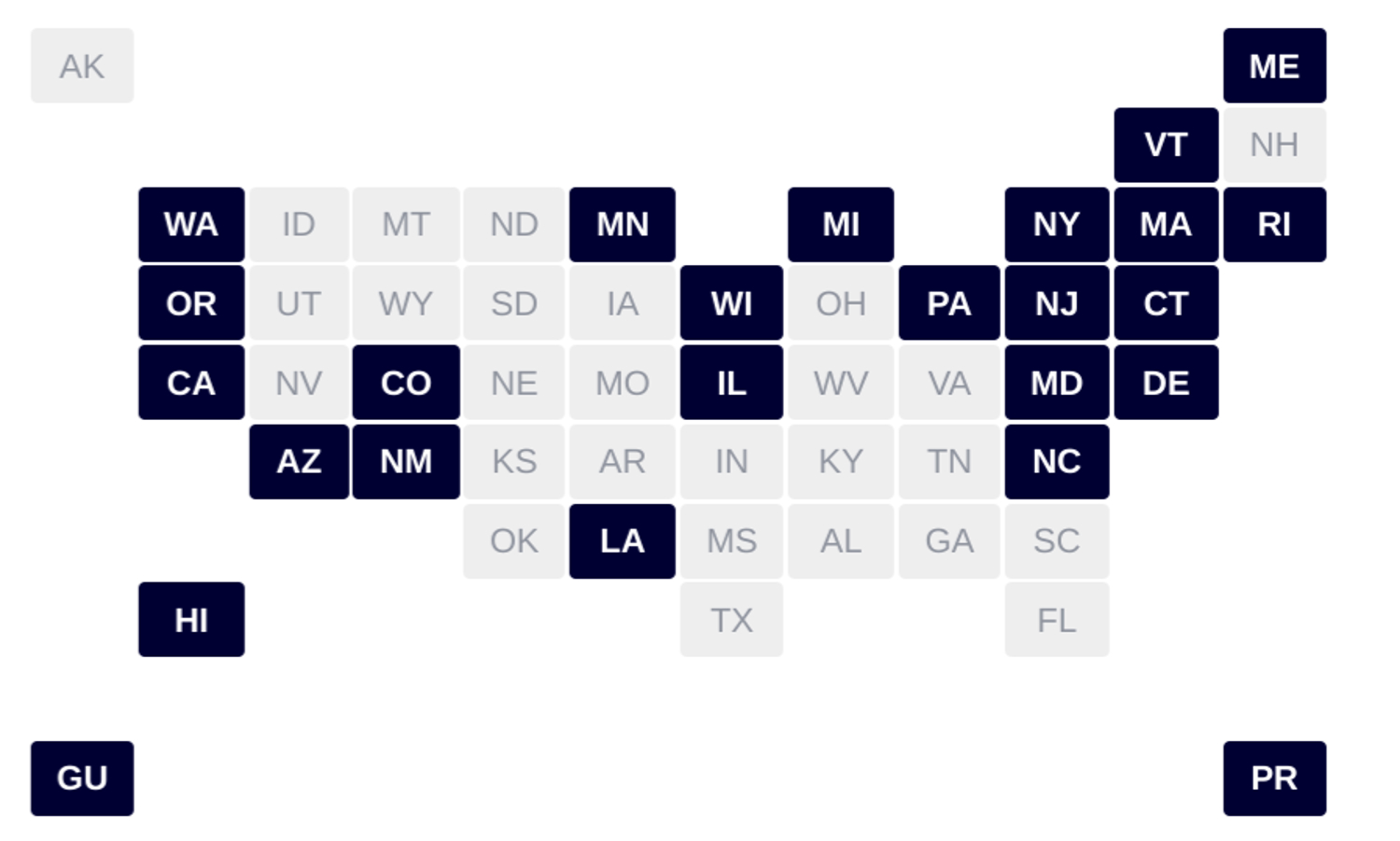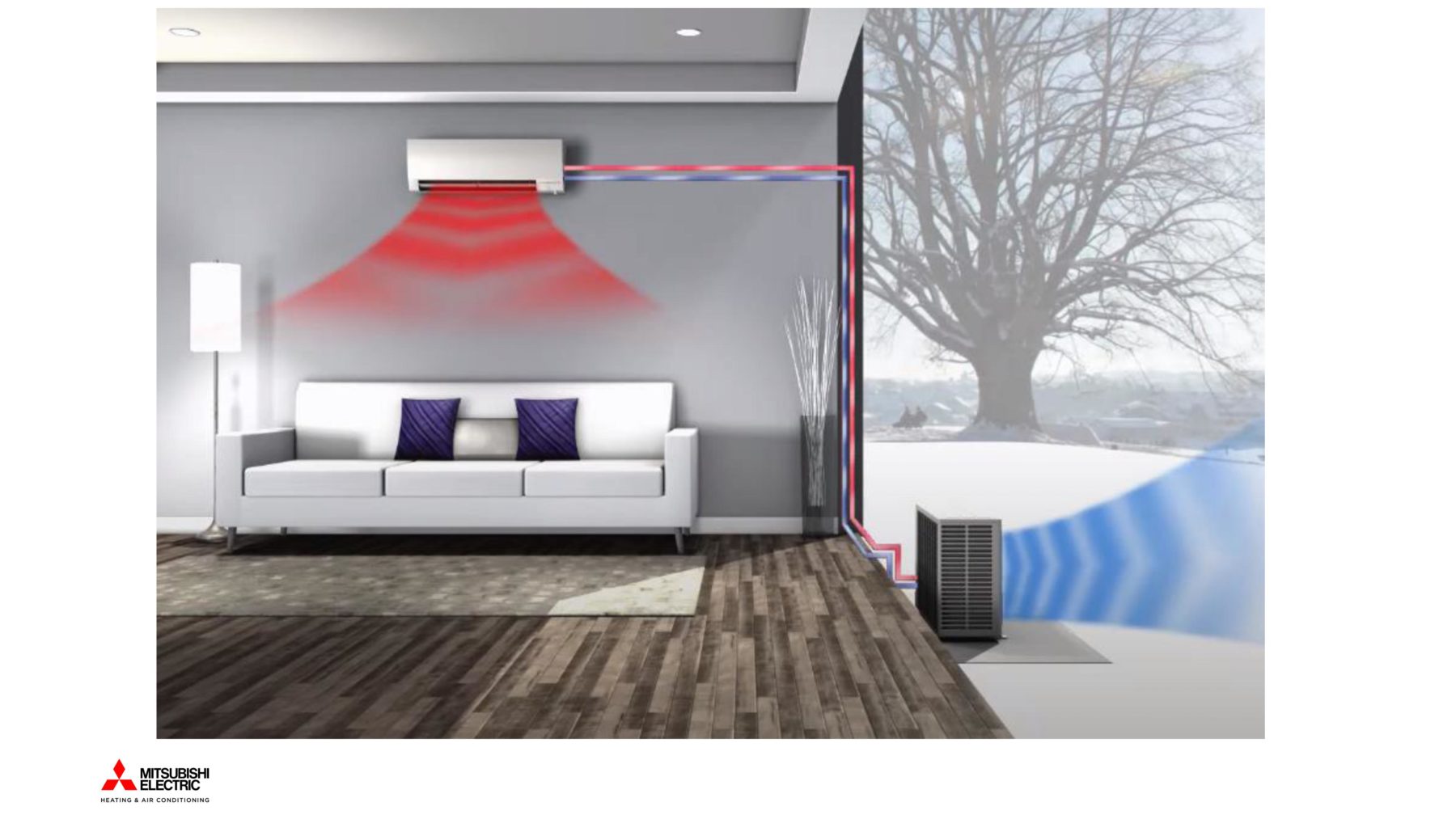Sign up for daily news updates from CleanTechnica on email. Or follow us on Google News!
The 25 states that are part of the US Climate Alliance agreed this week to promote policies that will speed up the installation of heat pumps in their states. Combined, those states account for 60% of the US economy and are home to more than half of all Americans. Today, there are 4.7 million heat pumps installed in America. The Climate Alliance wants to see that total grow to 20 million by the end of this decade.
The US Climate Alliance is a bipartisan coalition of 25 governors securing America’s net-zero future by advancing state-led, high-impact climate action. It was started by California, Washington, and New York in 2016 after the then-president reneged on America’s commitment to the Paris Climate Accords.

Courtesy of US Climate Alliance
“Heat pumps and heat pump water heaters are core decarbonization technologies that allow buildings to switch from burning fossil fuels for heating and hot water to using electricity instead,” the group told the press in New York City. “Making this switch can reduce home heating emissions in every US state by 35 to 93% while saving lives through improved air quality and protecting residents from volatile gas commodity prices.”
Why Heat Pumps?
Why all the hoopla over heat pumps? A recent article by the Natural Resources Defense Council explained it this way: “Heat pumps provide heating far more cleanly than furnaces, which burn large amounts of fossil fuels.” In fact, an NRDC-supported study showed that gas fired furnaces produce 45 to 70 percent more emissions than heat pumps.
“A heat pump’s carbon savings come from the fact that these appliances don’t create heat by burning fuels. Instead, they pull heat in from the outdoors. Per unit of energy, moving heat with electricity is several times more efficient — two to five times more depending on conditions — than producing it by burning fuel. In most cases, that improvement will result in savings on heating bills.
“Modern heat pumps are super efficient and can deliver heat down to -15 degrees Fahrenheit, and they can use electric resistance backup below that temperature, so they work in all U.S. climates. In fact, one of the leading states in heat pump adoption in the United States is Maine, where winters can be brutally cold.”
At the Climate Week event, Washington Governor Jay Inslee told the Associated Press that heat pumps are “almost a miraculous solution” to three problems Americans face: “heating in the winter, cooling in the summer, and a reduction of carbon pollution.” But that’s not all! “Heat pumps are available and affordable, not to mention better for the air we breathe,” he added.
Efficiency & Pollution
The reason heat pumps run on less electricity than other forms of heating is that they merely extract heat from outdoor air or underground and transfer it inside, instead of heating up a coil, for instance. They are just as good at cooling, pulling heat from indoors, and dumping it outside or underground, the AP says.
Efficiency is the watchword for the cleantech revolution. In the past 50 years, humans have added heat equivalent to 25 billion atomic bombs of the type dropped on Hiroshima and Nagasaki to the environment, according to a study by the University of New South Wales.
Burning fossil fuels is simply too inefficient. While the polar ice caps are melting and wildfires sweep across the land, we cannot continue to power our industries and transportation networks with systems that waste 50% or more of the energy they consume as heat.
America’s built environment accounts for about 30% of the nation’s greenhouse gas emissions, which makes it critical to heat and cool our buildings as efficiently as possible. Recent experience shows that heat pumps are approximately three times more efficient when it comes to heating spaces in cold weather than conventional oil- and gas-fired heating equipment.
There’s another consideration. Conventional heating equipment adds fine particulates — defined as particles in the air less than 2.5 microns in size — to the air in and around buildings. These small bits of pollution are invisible to the eye but they pass directly into our bloodstreams when we inhale them. They then travel to every organ in the body — our brains, hearts, livers, and so forth — where they accumulate. A recent report claims they may be a contributing cause of death for as many as 400,000 Europeans a year. Reducing the amount of fine particulates in our homes and workplaces would benefit everyone.
What’s Slowing Adoption?
That being said, heat pumps cost more to purchase and install than conventional heating equipment. As Canary Media points out, owners of homes and buildings typically wait for their old heating systems to fail before replacing them, setting up what’s known as a “replacement-rate” limit on how quickly heat pumps can gain ground.
People are understandably reluctant to rip out their current furnace if it is working well, and the higher costs may deter some from choosing a heat pump when the time to replace it finally arrives. That’s where the tax credits and incentives provided by the Inflation Reduction Act come into play. Heat pumps are eligible for a 30% federal tax credit up to a maximum of $2,000 per system. Additionally, many states and local utilities have rebates and incentives of their own.
Help For Underserved Communities
US Climate Alliance members also pledged that 40% of the benefits from its green buildings initiative will go to marginalized communities. “This coalition continues to prove that when we come together, we can make a greener future more equitable and accessible for all,” New York governor Kathy Hochul said in a statement.” Combined with President Biden’s historic climate leadership, these bold commitments by governors to cut emissions from buildings will have a catalytic impact across America.”
“It will clean up the air our children breathe, save hardworking families money on their monthly energy bills, strengthen America’s climate resilience, and create good paying jobs in every corner of the country,” White House National Climate Advisor Ali Zaid said in a statement Thursday.
Maine has its share of undeserved communities as well. At Climate Week, Maine governor Janet Mills spoke of her state’s positive experience with heat pumps. Her state set a goal in 2019 of installing 100,000 of them by 2025. That goal has been exceeded by a wide margin, with 104,000 installed by the end of August this year.
The Takeaway
Heat pumps are more efficient than other sources of heating and cooling, which means they can save people money. The stumbling block is cost. The equipment must be paid for when it is installed; the savings come later.
Let’s assume a typical system costs $5,000. Now let’s say a typical home spends $2,000 a year on heating and cooling. If a heat pump can cut those costs by 50%, that’s $1,000 a year a homeowner doesn’t have to spend and it makes the payback time 5 years.
Now, we all know I am math challenged, so work with me here. Assuming the equipment is eligible for the 30% federal tax credit, that is $1,500, which makes the net cost $3,500. The break-even point then becomes 3½ years. Assuming the equipment has a useful life of 20 years, that means the homeowner will pocket $16,500 in savings for a $5,000 investment. If the price of oil or gas goes up, the savings will be even greater.
If someone told you there was a heating and cooling system that would cost you $5,000, pay for itself in 3½ years, and save you $16,500 over 20 years, would you take that deal? Most people would.
There are some caveats. Not everyone has a federal tax liability, in which case there is no tax credit available. That makes the payback time 5 years and the net in the homeowner’s pocket “only” $15,000. That still seems like a deal most people would take. There may be financing offers available locally that could reduce the upfront cost to zero, so all is not lost for low- and moderate-income people.
Ten years ago, heat pumps were a mystery to many people. Ten years ago, electric cars were a mystery to many people. Both are not so mysterious today, and besides, what price can you put on a healthier home environment for children to grow up in?
The oil, gas, and propane industries are pedaling furiously to convince people not to make the switch to heat pumps, which is sort of like manufacturers of cathode-ray tube TVs trying to talk people out of buying a flat-screen smart TV. Heat pumps are here and they make economic sense in practically every use case. It’s time for Americans to make the switch.
Have a tip for CleanTechnica? Want to advertise? Want to suggest a guest for our CleanTech Talk podcast? Contact us here.
EV Obsession Daily!
I don’t like paywalls. You don’t like paywalls. Who likes paywalls? Here at CleanTechnica, we implemented a limited paywall for a while, but it always felt wrong — and it was always tough to decide what we should put behind there. In theory, your most exclusive and best content goes behind a paywall. But then fewer people read it!! So, we’ve decided to completely nix paywalls here at CleanTechnica. But…
Thank you!
Tesla Sales in 2023, 2024, and 2030
CleanTechnica uses affiliate links. See our policy here.





